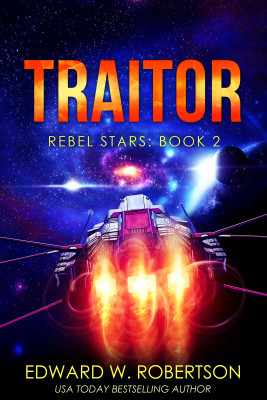Yesterday, Taleist put out their survey of the self-publishing climate, Not a Gold Rush. The biggest news to come out of it is that self-publishing is no get-rich-quick scheme: last year, half of all self-published authors who responded to the survey made less than $500 a year. This was apparently so shocking it was worth mention in the Guardian.
My response? Yeah, no shit.
Having spent most of last year down in the ranks of #100,000 – 866,000 on Amazon, I can attest that there are a lot of people there. Like a literal million!
Let’s do some numbers. It currently takes about 1 sale/day to sustain a rank of #100,000. If you’re selling your book at $2.99 like a good old-fashioned indie, you’re making about $2 per sale. If your book sells 365 copies at $2 apiece, it’s pulling $730 per year. To sell slightly less than that, about 5 copies/week, your rank will hang out in the neighborhood of #150,000. In other words, some 850,000+ books–roughly 85% of Amazon’s listsings–potentially fall beneath that earnings threshold. (Obviously most are traditionally published works that retail for more than $2.99, but bear with me.)
If your rank’s around #500,000, you’re probably only selling about 1/month. In more other words, 50% of the books in the Kindle store are selling 20 or fewer copies per year.
Of course, we’re talking about individual books, which authors are known to produce more than one of. And I don’t know how many of the 850,000+ books that fall beneath that potential earnings threshold are self-published. But that should provide some picture of the scope we’re working with. There are a lot of books. There are a lot of authors. And most don’t sell very well at all.
And you know what? I don’t see how it’s a knock on self-publishing that half of the authors reported in the survey (which covered 1,007 participants) are making $500/year or less. Selling books is hard! It’s amazing that half are making more than $500 a year!
Then again, they probably aren’t, because the survey was self-selecting. Rather than being a truly random sampling of authors, those surveyed opted in, volunteering their information. Almost inevitably, this will skew results towards the most successful side of the environment–people who are doing well be more enthusiastic about sharing news of their success. The more successful writers are the ones most likely to be active on the forums etc. where Taleist culled their data. They’ve caught a lot of flak on this front for a small and unrepresentative sample size.
I’m inclined to be more forgiving. 1,007 authors is actually a pretty big sample. If it were random, the results would be pretty reliable. Even assuming there’s a built-in bias towards the successful side of the scale, we’re looking at results that are probably somewhere in the ballpark of accurate. Same league, anyway. Then again, the Rangers are in the same league as the Twins. That is a baseball joke.
Rather, my main issue with Not a Gold Rush is that most of its stats are correlative.
For instance, they report that “authors who get help (paid or unpaid) with story editing, copy editing, proofreading, and cover design make 34% more than the average.” But what does that mean? That’s not proof that getting help causes success. Instead, outside help correlates with–is somehow related to–success in selling books. But is that because a proofread book will generally sell more books? Or because those authors who are already successful are the ones most likely to be willing and able to hire a proofreader?
Some of these correlations don’t pass the smell test, either. According to their data, authors who tried and failed to acquire agents and traditional book contracts sell worse than those who never tried the traditional route at all. That doesn’t sound at all right to me. That’s the kind of counterintuitive stat that would have me suggesting that perhaps this survey skewed towards the proudest indies out there.
To be fair, the survey purportedly doesn’t present the data in terms of “Doing X causes a YY% increase in earnings.” But we should not rush to draw those conclusions for ourselves, either. You can see how the meaning of these stats is already getting fuzzy–“Judging by this survey of authors who are disproportionately successful to the rest of the self-publishing world, those who did this, that, and the other thing are somehow related, in ways we can’t prove, to a modest increase in royalties.”
So is the data (and the book it’s sold within) worthless? No. At the very least, it is, as others have said, an interesting historical snapshot of where the self-publishing world was at (or nearby) at the time the survey was taken. It will be particularly interesting to compare it to next year’s results, which they’re already planning to collect, and the next several years after that. Furthermore, although much of the data isn’t hard evidence of a cause and effect relationship between the choices you make as an author and the impact of those choices on your sales, it is slight evidence that doing this or that could help give your sales a boost. (I was shocked to learn that only 41% of those polled paid artists to design their covers. Either there are a lot of multi-talented authors out there, or people need to start cracking their wallets!)
Overall, however, I’d treat it with caution. The numbers might not mean what they appear to mean. They’re pretty fuzzy. Interesting, but far from conclusive. Take anything in the book with a grain of salt. Oh, and you should probably treat my perspective on it just as skeptically. After all, it’s not like I read the damn thing.





Leave a Reply